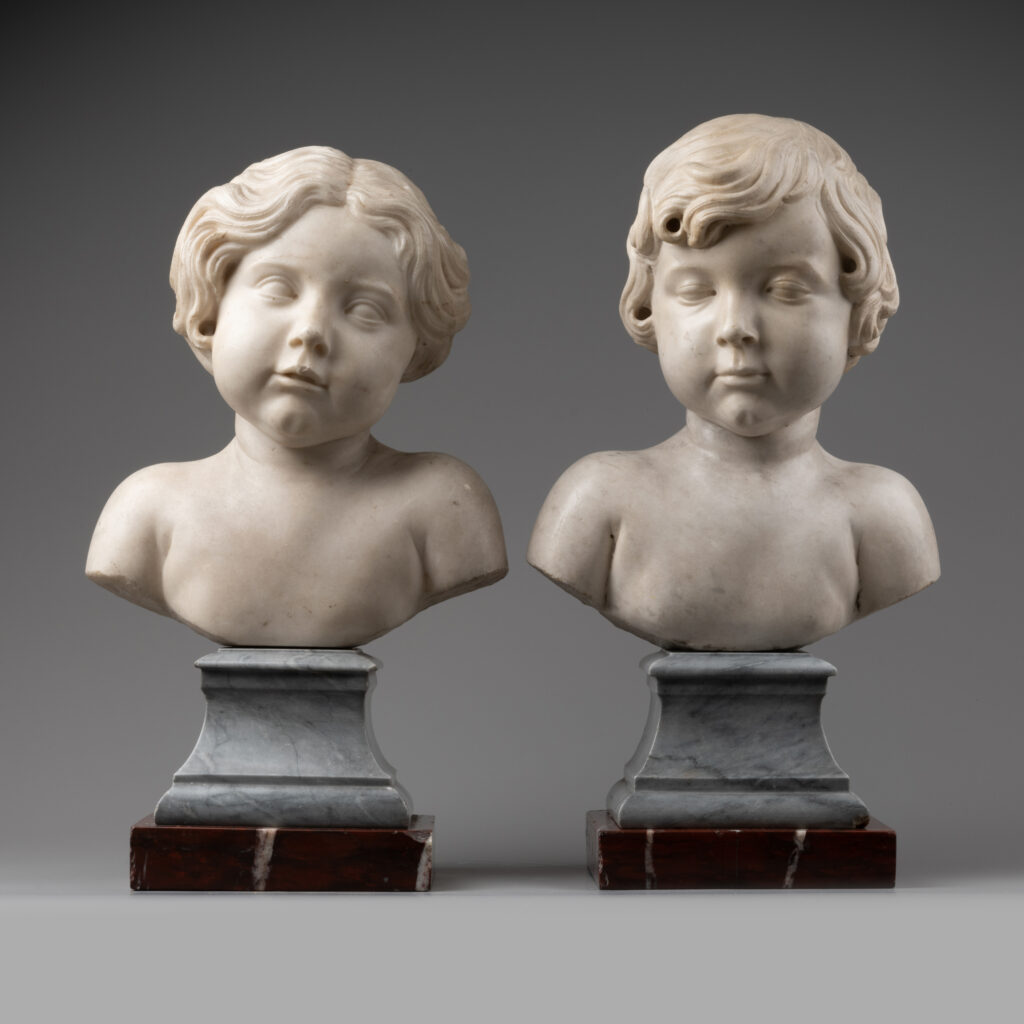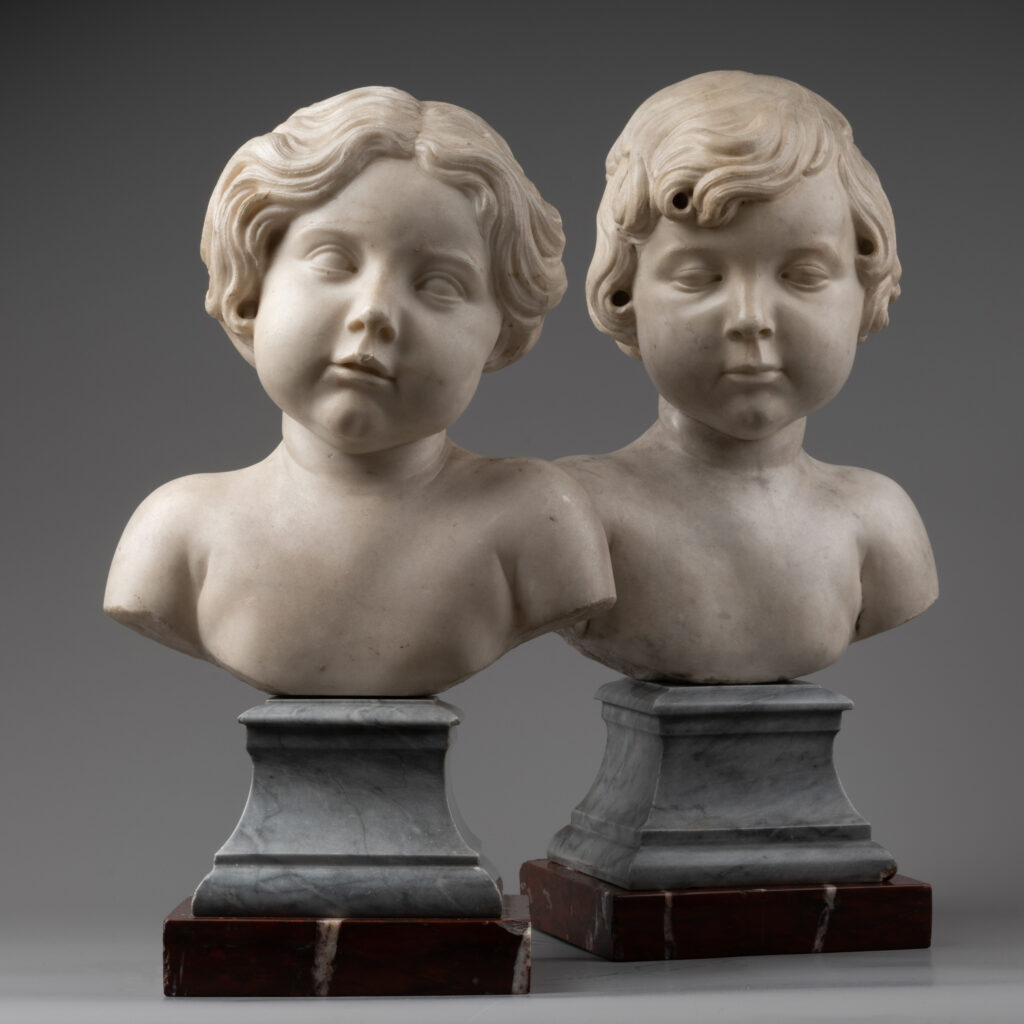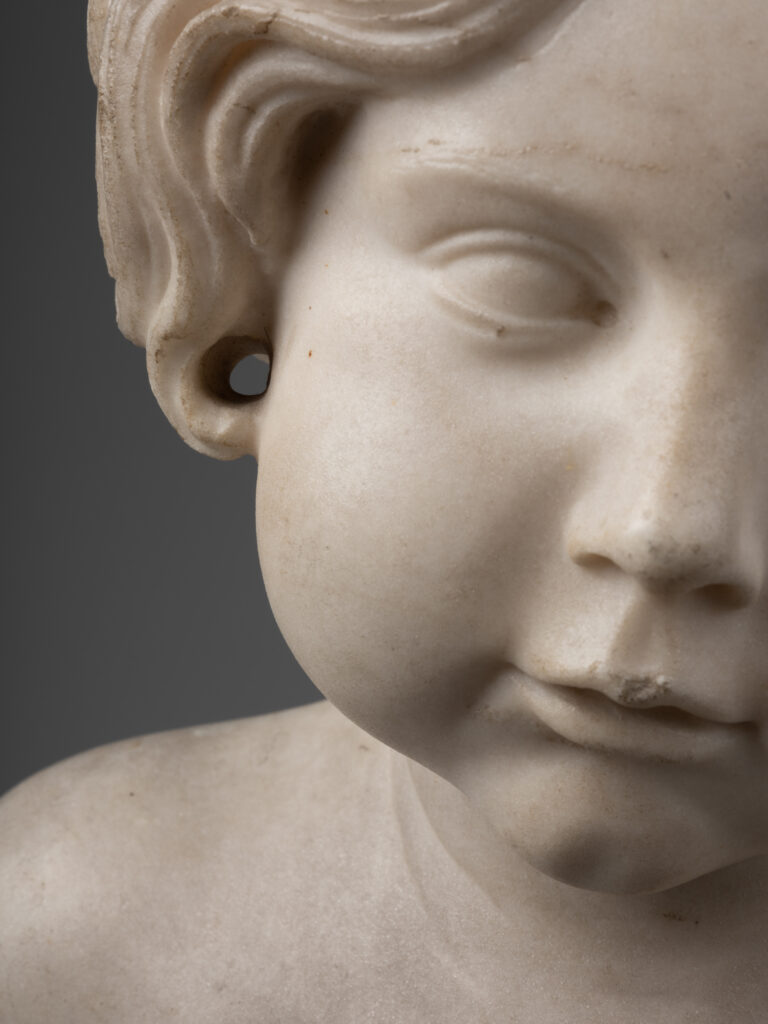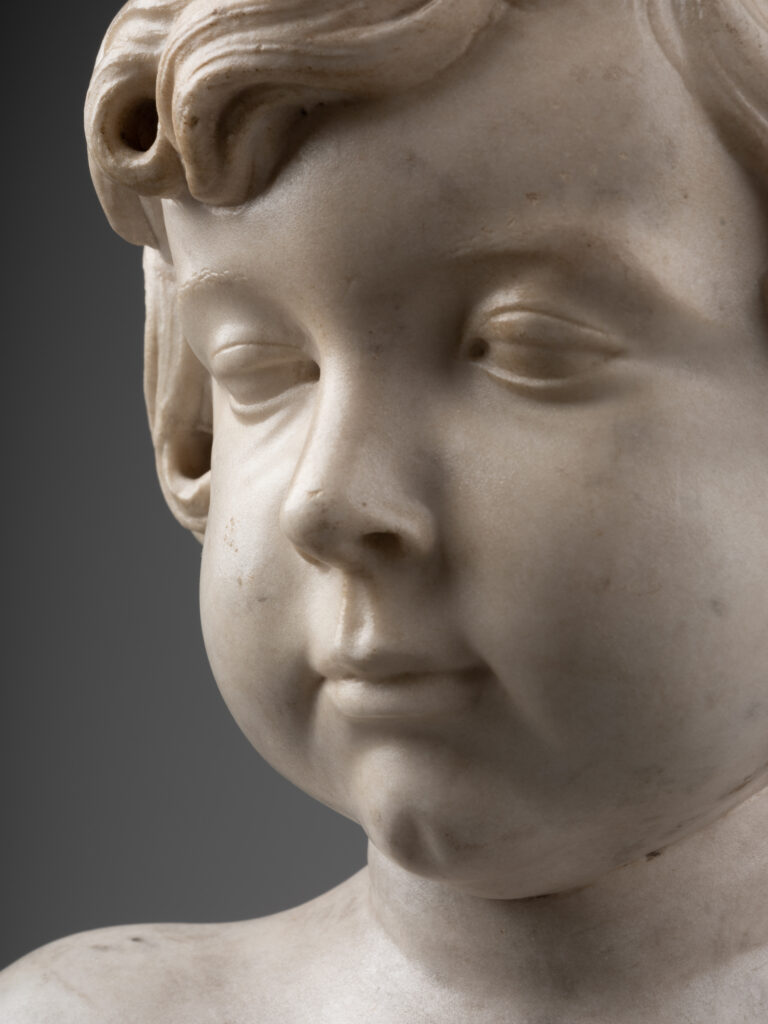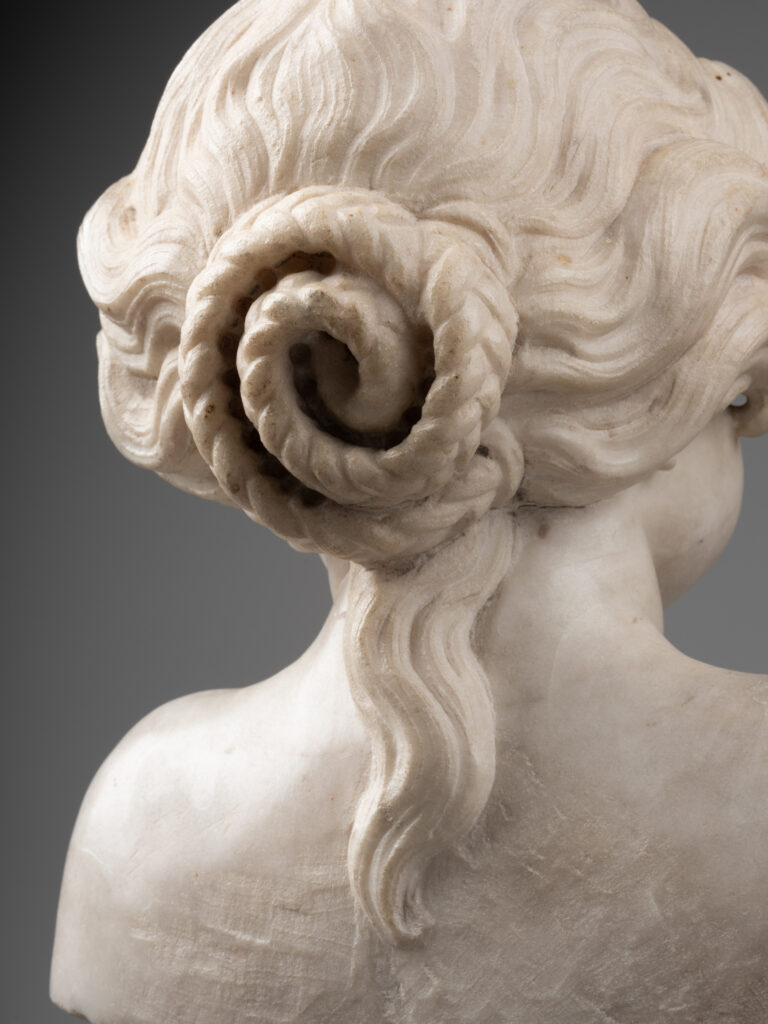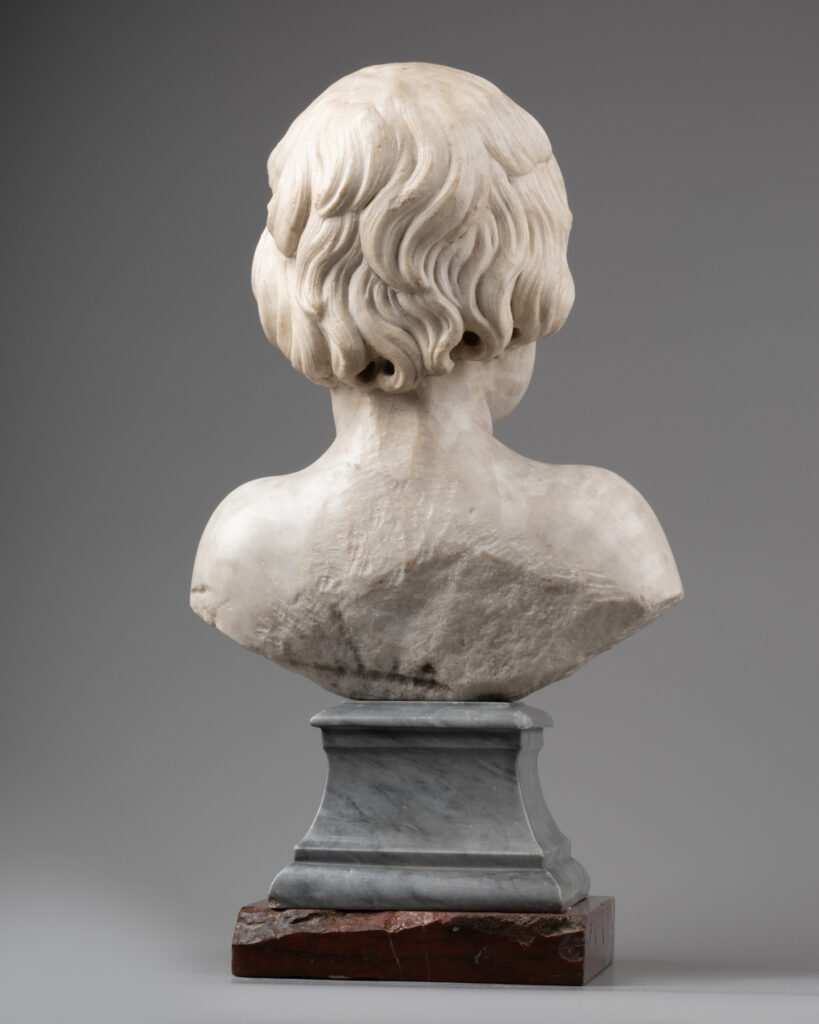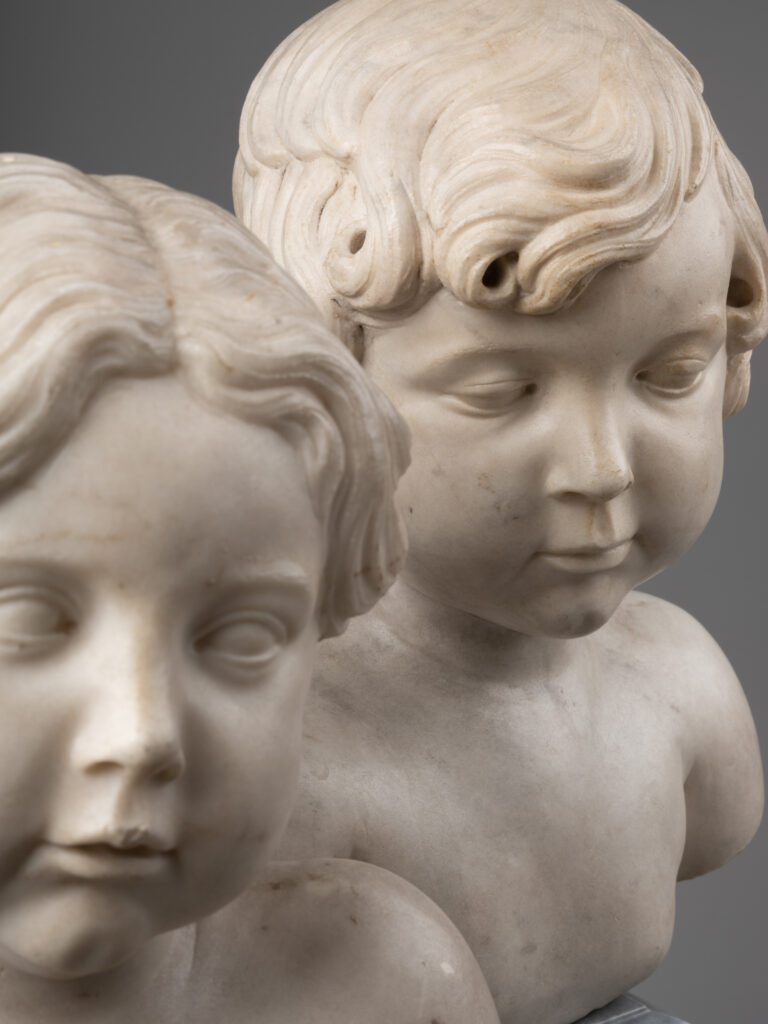This pair of marble busts is the work of a 17th century Italian artist. The end of the Renaissance was marked by Mannerism with its disordered compositions and elongated figures, and some artists sought to renew their production. This is why the Baroque appears with a taste for movement and dramatisation. There is also a desire on the part of other artists to return to pure forms, closer to a classical spirit, to the antique. This movement originated in Rome at the end of the 16th century with the painter Annibal Carracci, who recommended that his pupils study Antiquity, the great masters of the Renaissance and nature.
Our two toddlers are borrowed from this Roman classicism with all antica positions and idealized faces with pupil-less eyes. The marble work, particularly in the hair, suggests the use of the drill bit. This technique is used in carving to reach recesses, clear hard-to-reach areas and roughen small diameter grooves by forming cylindrical cavities. It is intended to be a slow but precise tool and is designed for very fragile areas and hard materials such as wood, stone and marble. Used during Antiquity, the technique of the drill bit reinforces the classicism of the two busts. It also brings movement and depth to the whole.
The slightly open mouth and the work on the bun of the female bust remind us of the Bust of Costanza Bonarelli by the Italian sculptor Gian Lorenzo Bernini, known as Le Bernin. Our sculptor takes up the model of this hairstyle with a plaited and slightly dishevelled bun that lets a lock of hair escape at the nape of the neck. This mid-17th century masterpiece depicts the artist’s mistress, caught in a moment of pure intimacy.
If we take into account this intimacy and the certain taste for Antiquity, it is possible to imagine that our two busts represent Eros and Psyche. According to the myth, Psyche is a princess of such beauty that she arouses the jealousy of Aphrodite. The goddess then asks her son Eros to get rid of her: with one of his arrows that bestows love, Eros must bind the princess to the most vile being imaginable. While handling his bow, Eros is injured by the said arrow and falls madly in love with Psyche. Meanwhile, the princess is desperate to get married and decides to consult the oracle of Delphi. According to the prophecy, she is destined to be abandoned on top of a hill until a monstrous creature comes to get her and marry her. When that day arrives, the monster approaches Psyche who is saved by the Zephyr, a wind that takes her to an unknown palace. This place is none other than the property of Eros who, to protect himself from Aphrodite, hides his identity from Psyche and forbids her to look at him. As the two lovers live happily ever after, Psyche’s sisters get involved and try to discover the face of this mysterious character they believe to be monstrous. They arouse the curiosity of Psyche, who decides to go and observe her lover in his sleep. Unfortunately, Eros awakens and Psyche flees in shame. Separated, they suffer the fate of Aphrodite who sequesters Eros while forcing anyone not to welcome Psyche into their homes. She undergoes many trials and receives from Persephone the cream of her unalterable beauty, which is supposed to bring back the loved one. Upon inhaling its aroma, Psyche falls into a deep sleep. Fortunately, Eros eventually escapes and revives her. They end up marrying on Mount Olympus and give birth to Hedoné, goddess of Pleasure.
The theme of Eros was taken up in the 17th century by the Flemish sculptor François Duquesnoy. Known as il Fattore di Putti, the sculptures of this renowned artist strongly inspired the production of his pupils. This is notably the case of Josse le Court, a pupil of Duquesnoy, who produced a Tête de bambin around 1670, the theme and execution of which remind us of our two busts.
Our pair of toddlers is therefore part of the sculpture production of the 17th century. The sculptor of these busts was able to use the models of the great artists of his time and offers two very beautiful pieces which combine tradition and a certain mastery of the techniques of marble carving.
